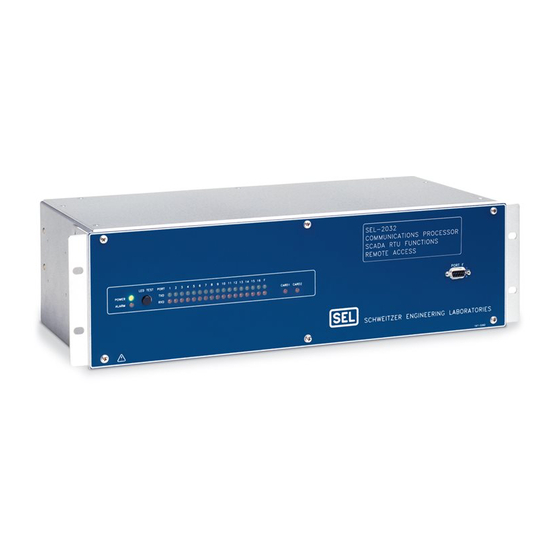
Schweitzer Engineering SEL-2032 Manuals
Manuals and User Guides for Schweitzer Engineering SEL-2032. We have 1 Schweitzer Engineering SEL-2032 manual available for free PDF download: Instruction Manual
Schweitzer Engineering SEL-2032 Instruction Manual (354 pages)
Communications Processor
Brand: Schweitzer Engineering
|
Category: Computer Hardware
|
Size: 2 MB
Table of Contents
-
Preface13
-
-
Introduction17
-
Applications17
-
Functions29
-
Details41
-
-
-
Introduction47
-
Main Board47
-
Drawings57
-
-
-
Introduction71
-
-
-
Introduction105
-
Operation105
-
Inputs106
-
Equation Syntax108
-
Outputs109
-
-
-
Introduction115
-
Overview115
-
20EVENT Features121
-
-
-
Introduction125
-
Access Methods146
-
-
-
Introduction149
-
SET Commands149
-
-
Data Type183
-
Flow Control183
-
Settings Sheets187
-
-
-
Introduction217
-
Command Set219
-
-
Introduction245
-
Table 9.7 Device263
-
Error Handling264
-
-
-
Introduction311
-
Alarm Conditions311
-
Self-Tests312
-
Troubleshooting312
-
Initial Checkout314
-
Calibration315
-
-
Glossary339
-
Index341
Advertisement
Advertisement
